By land and by sea
The Kenai Peninsula in southern Alaska is a paradise for those seeking soft adventure and anyone who wants to get close to northern nature. We had already aced the whole bear thing down in remote Katmai National Park and were now headed for Kenai Fjords National Park and the port town of Seward to explore everything it had to offer. And we started with a perfect 10 campsite on the gravel banks of Resurrection River with towering mountains all around us.
But this is August, the rainy month of southern Alaska, and this is Seward, the touristy town that supports huge cruise ships, seasonal commercial and recreational fishing and is known for being drizzly/rainy/wet. And so it was.
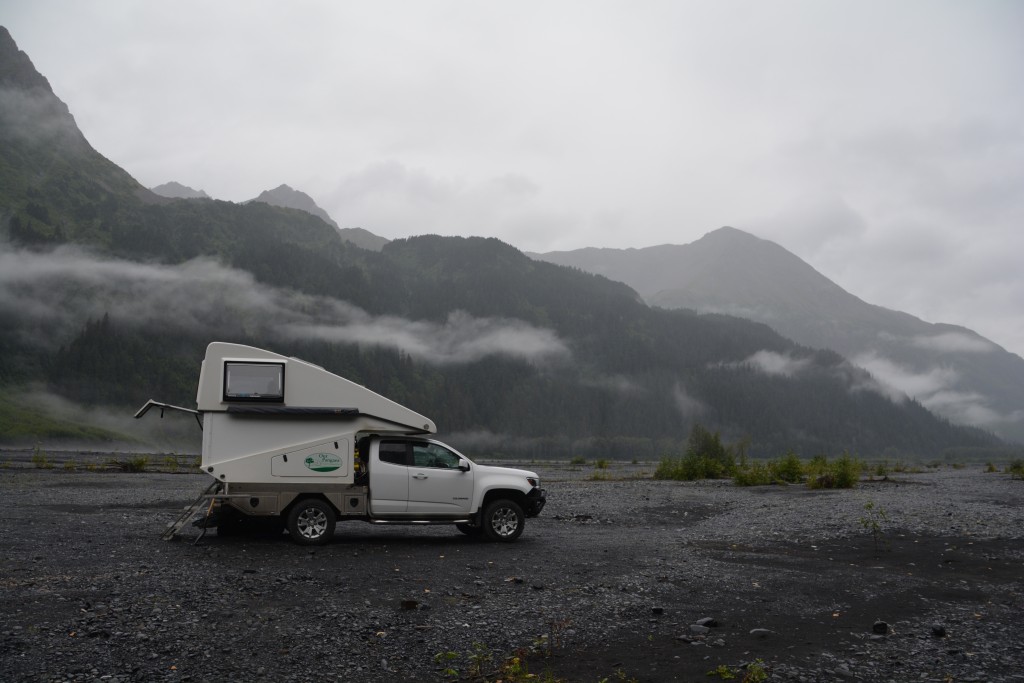
Tramp wears the weather – low clouds, rain, cold and a usually a bit windy but always in a beautiful setting
Seward is beautifully placed at the end of Resurrection Bay with towering mountains and small glaciers hanging high above the water, one of the major fjords to the Kenai Peninsula. In season the town also hosts the huge cruise ships that ply these cold waters. A monster big ship was in port while we were there but the town was not frantic – well, nothing ever seems to get frantic in Alaska – and the focus was more on the silver salmon fishing derby that had hundreds of boats out in the bay. One thing we’ve learned – If you don’t fish or hunt you shouldn’t live in Alaska!
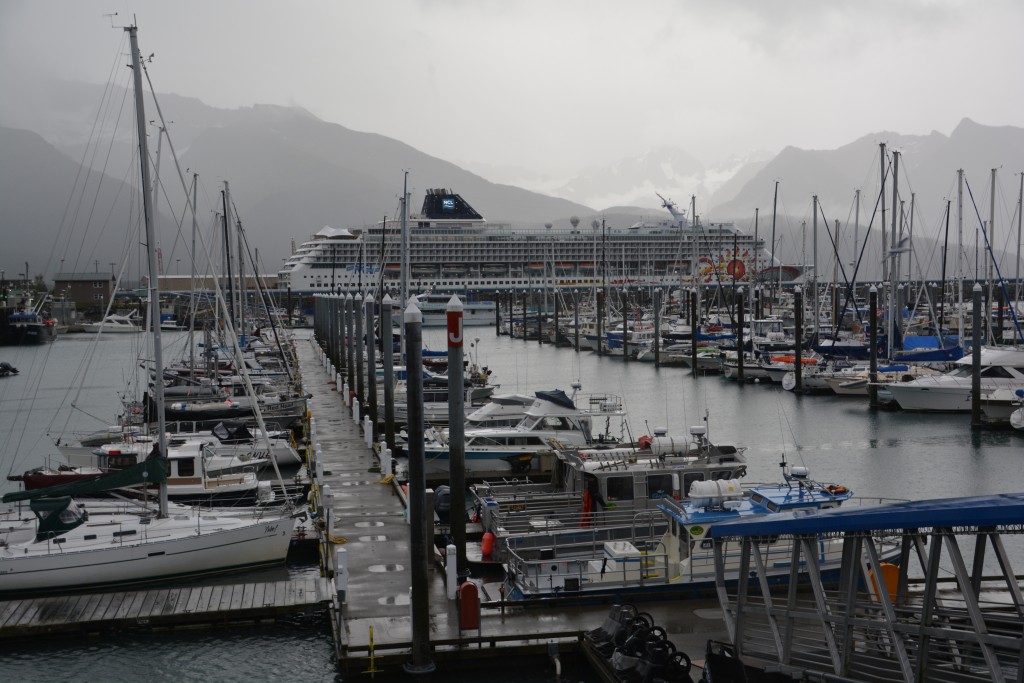
The port of Seward is dominated by a gazillion fishing and sailing boats and the occasional cruise ship
After killing a day in Seward we headed back into town, still raining and a bit grim, and boarded our pre-booked ferry for a full day tour of the fjords which finger into the national park. It was the last trip of the season for this particular tour and our boat was only about a quarter full. We motored out of Resurrection Bay with its steep mountain walls and numerous hanging glaciers on both sides, not sure how much the bad weather might impact this splurge event for us.
The day turned out to be a spectacular success. There was intermittent rain for most of the day but the cloud cover was high enough for us to appreciate the towering mountains around us and the ocean bumps were all manageable. We cruised westward around some islands and into Aialik Bay, another long fjord carved out by a huge glacier thousands of years ago.
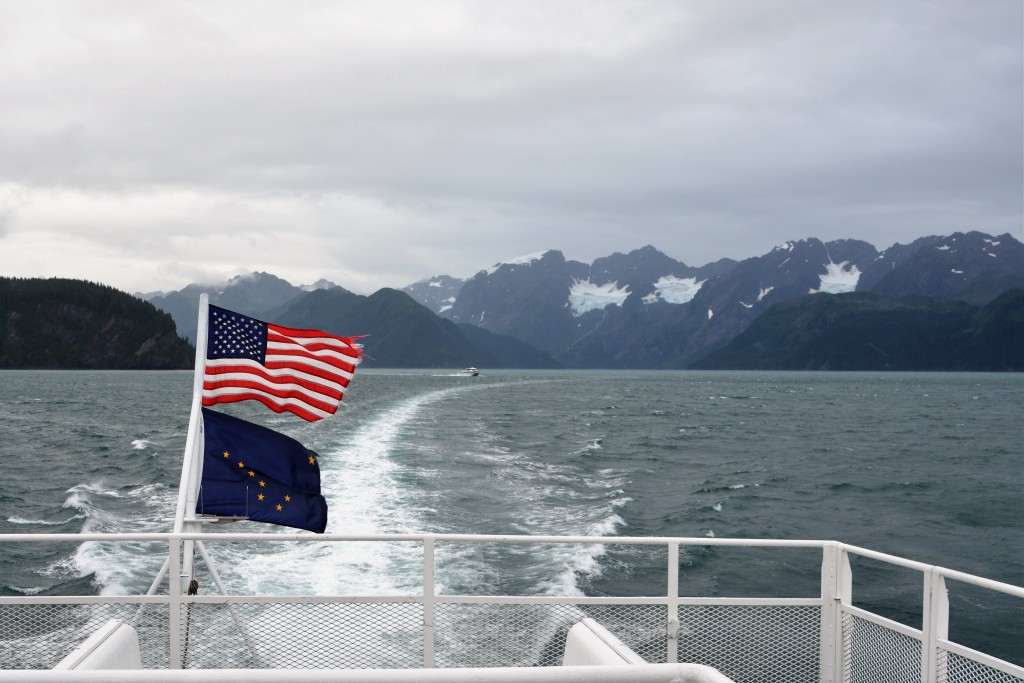
The weather wasn’t a big factor on the day – cold and drizzly most of the time but that didn’t stop us enjoying the sights or the wildlife
We angled for a deeply carved bay on the western slopes of the fjord which led to the massive Holgate Glacier. This tidal glacier comes right down to the water’s edge, the ice of its 50 foot face cracked and weathered from its 200 year journey from the back of the glacier to the front. We spent a long time at the base of this monster, admiring its icy blue colours, listening to its creaking sounds, the water pouring out from it’s base, small chunks breaking off and adding to the car-sized icebergs all around us. This was a beautiful and peaceful scene, nature at its best.
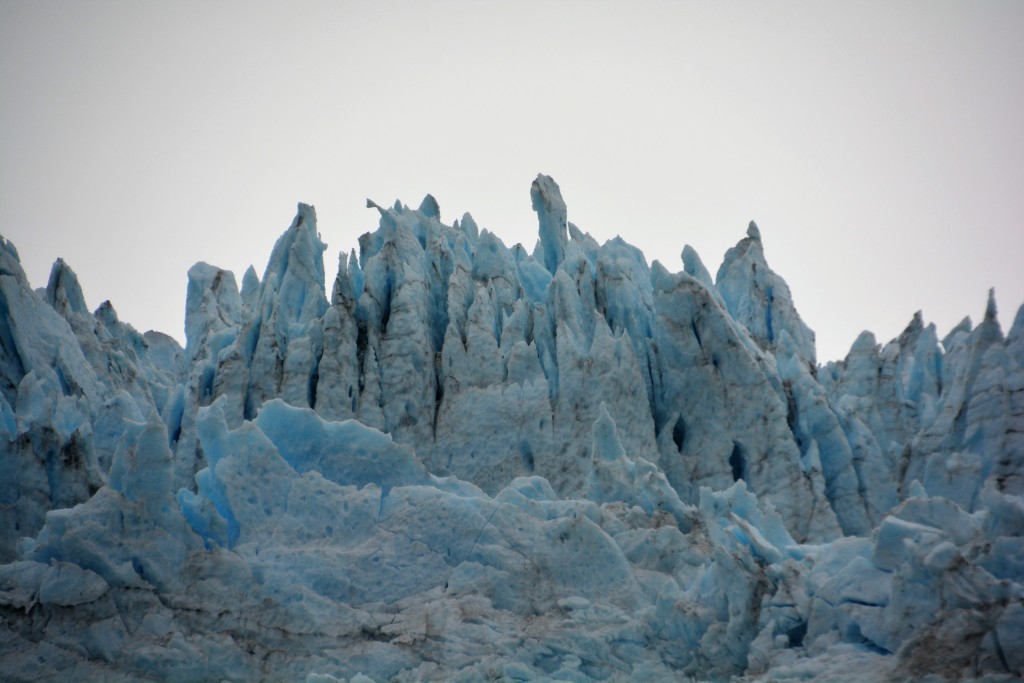
Some of the up-close looks of these ice formations in the glaciers were amazing – I think these towers are called seracs
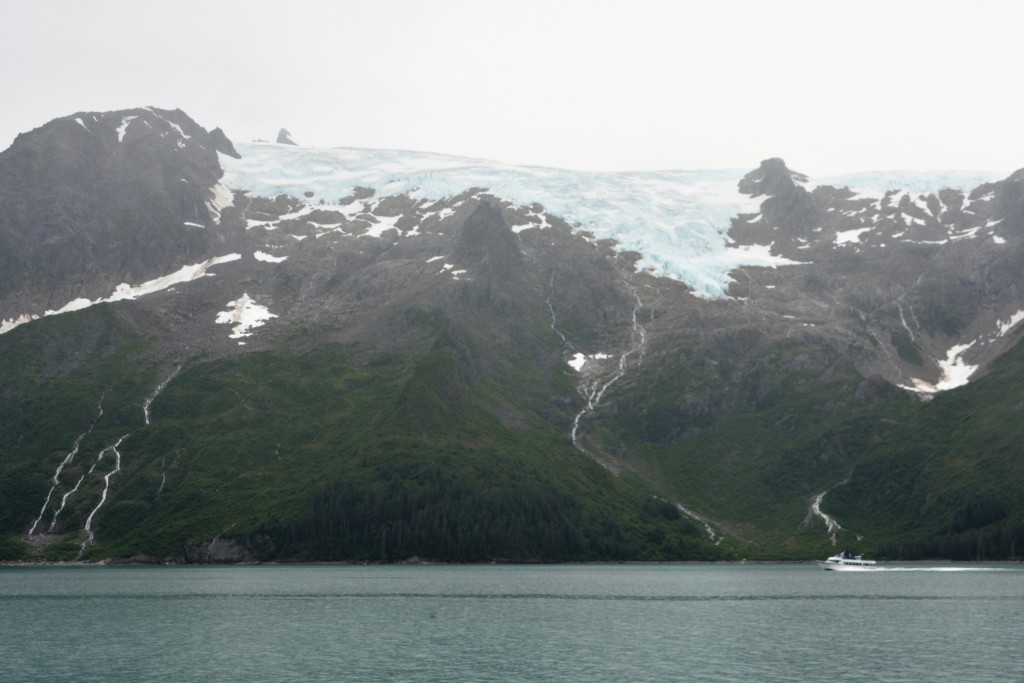
There are glaciers all around us – this nameless hanging glacier has multiple streams of water running from it because of the rain
At the end of fjord was another huge glacier – the Aialik Glacier is three times larger than Holgate, much wider and higher in the mountains but still touching the water’s edge. Again we pulled in tight for close-up views and again we were blown away by the magic of it all. How these immense ice fields, almost a living beast with its movement, sounds and colours, carve a path through solid rock mountains and change the local environment for thousands of years is beyond imagination. Just great stuff.
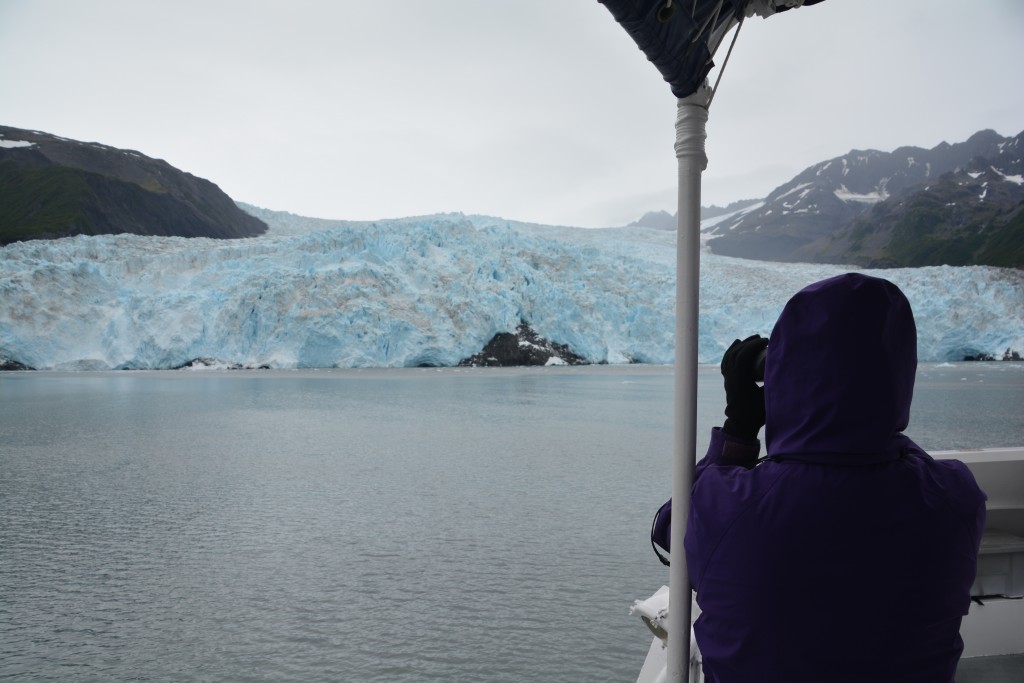
Julie gets a closer look at some of the detail in the glacier’s face, including little pieces constantly falling into the water
But wait, there’s more. During the cruise we were also treated to many different animal sightings, including a few different humpback whales feeding on fish which would congregate in tight ‘bait balls’, the endangered Steller Sea Lions lazing about on a rocky islet, a group of harbour seals sporting their different colours, many otters, both varieties of the cute little puffin birds that are so popular, thousands of feeding kittiwakes and friendly porpoises who would playfully jump over the boat’s wakes. It was a smorgasbord of Alaskan marine creatures, all happy to add to our fabulous day.
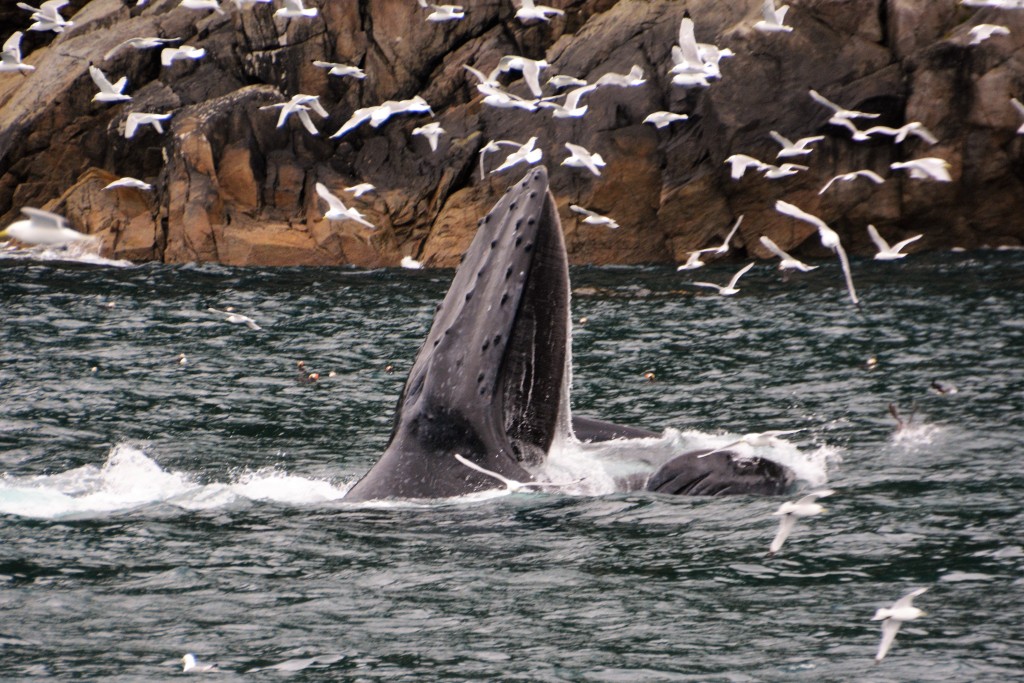
The humpback fishing technique is to dive deep and come straight up through a ‘bait ball’ of fish with its mouth open, then popping out above the surface
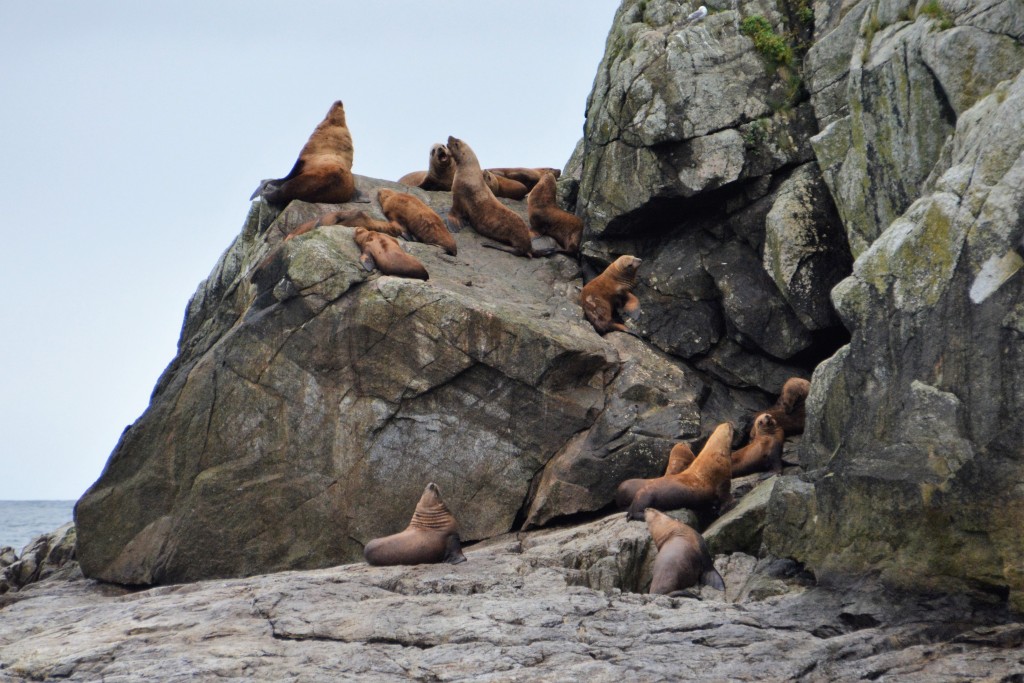
The endangered Steller Sea Lions seem to take a more relaxed approach to life – just lying about on rocks and occasionally letting out a loud bellow
That night we camped with many others on the shores of Resurrection Bay, fishermen down on the rocks in front of us, high mountains across the bay, glaciers scattered in all directions. It was a public area but the scenery was stunning and as a bonus the huge cruise ship left port and floated by us, a new lot of 2,000 people excitedly looking forward to their cruise down the Inside Passage to Vancouver.
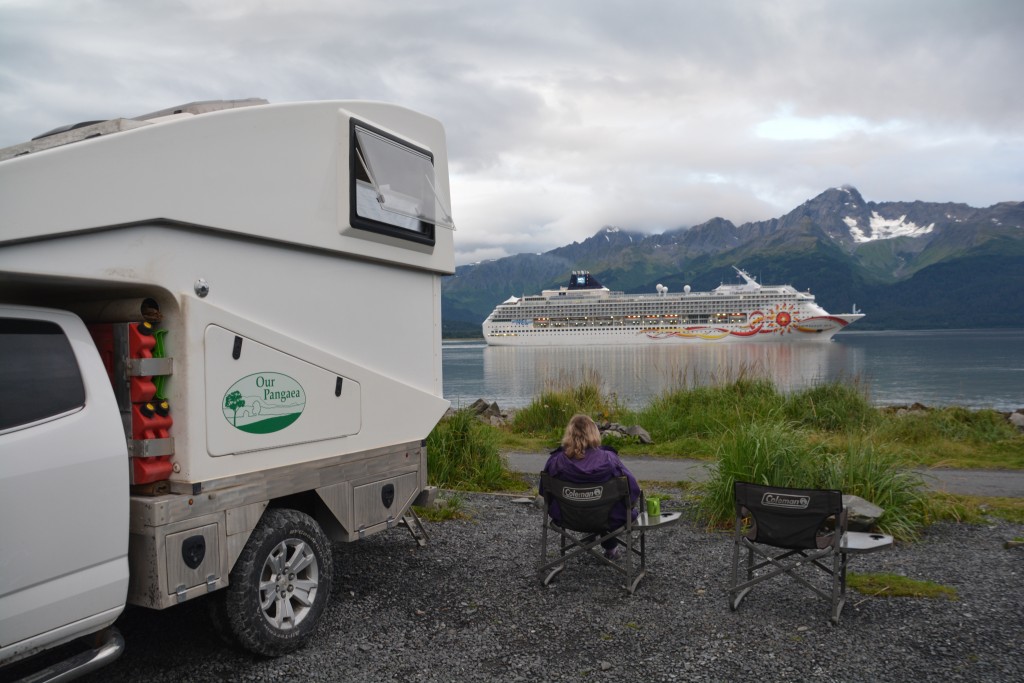
We were camped on the shore of Resurrection Bay and watched a huge cruise liner sail out of port and into the wild blue yonder
Our last ‘must do’ item in Seward was to go into the national park and walk up the Exit Glacier, one of the acclaimed outdoor experiences of any visit to Alaska. In fact, Kenai Fjords National Park was established in 1980 primarily to protect the unfathomly huge Harding Icefield that feeds glacier ice to about 40 glaciers spilling off in all directions. One of the most accessible of these glaciers is called Exit Glacier and with rare blue skies above us we headed up the trail that tracks along the side of this glacier up it’s own valley.
This long beautiful glacier, like a giant tongue laying between two mountains, has been receding for the last 100 years, as have most glaciers. But it is still of immense size and we trudged up the muddy track, through the trees and shrubs, back and forth on the switchbacks until we came to the first major viewpoint, called Marmot Meadows. From here we could see the details of the glacier in all its glory, icy blue colours in its deep cracks and crevasses, dirt streaks running down its spine from trapped moraine, high steep mountains all around us and the start of the Harding Icefield above the glacier on the high horizon.
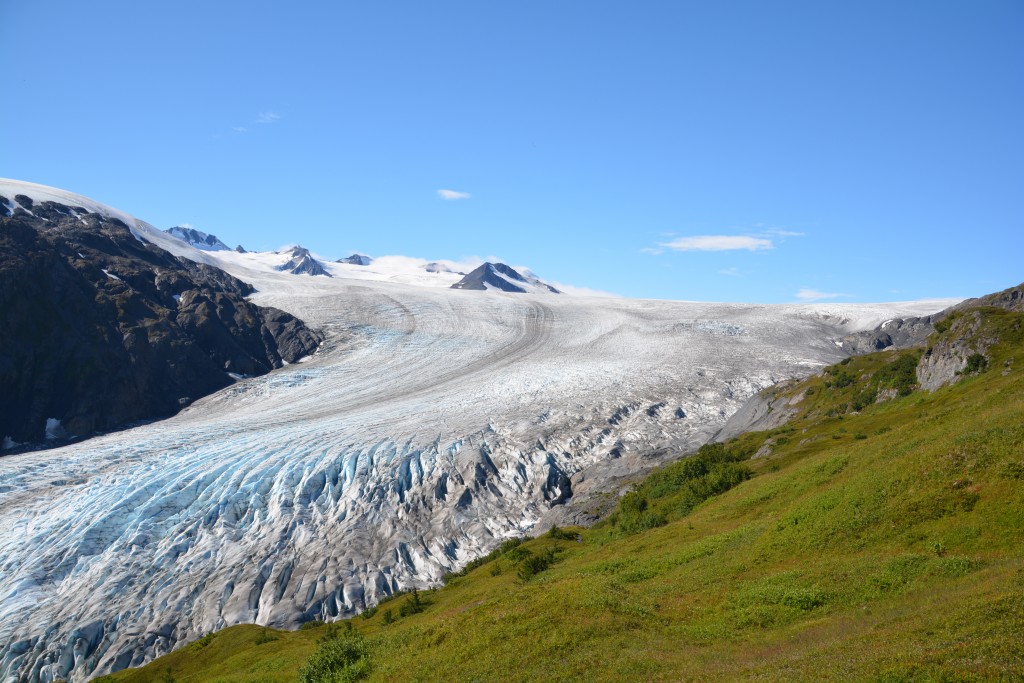
As I climbed above the tree line the glacier spread out and its origins up in the icefield came into view
From here Julie headed back down and explored the lower trails at the base of the glacier and the huge glacial wash that becomes the Resurrection River. I gamely followed the trail up, determined to get to the top for views of the icefield itself.
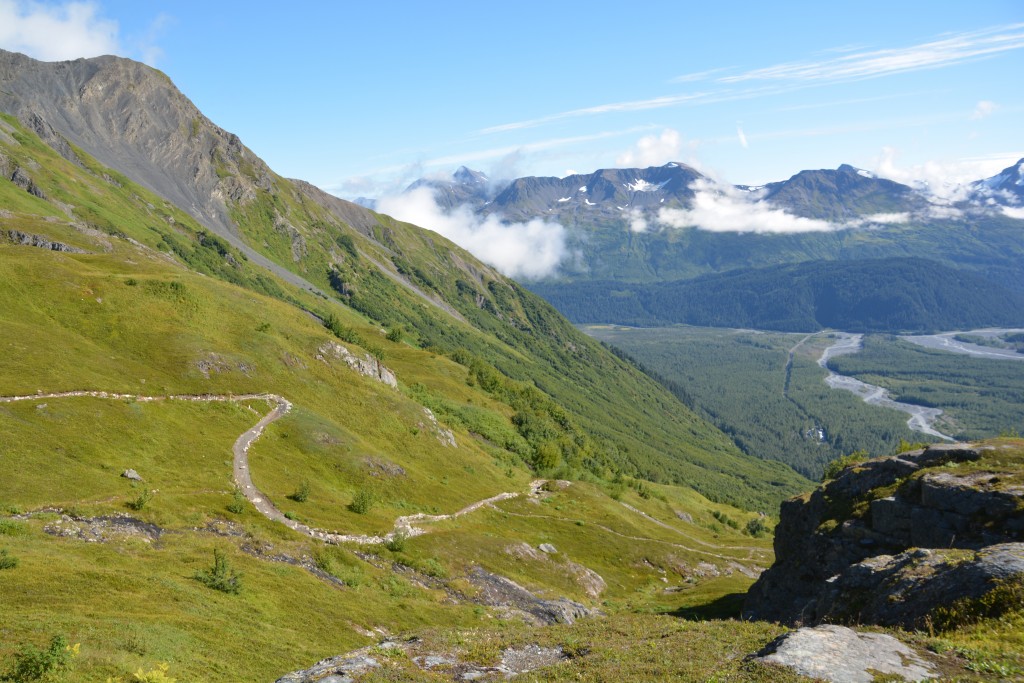
This climb was designed for mountain goats, not unfit travellers who hadn’t exercised very much for months
The walk to the end of the trail overlooking the icefield is only 4.1 miles (6.6 kms) each way, not an insurmountable distance. But to get to the top you must go up, I mean really up, as the trail has switchbacks and numerous long steep traverses to reach its summit. We rose above the tree line, tracked across steep loose scree and eventually walked up, over and through ancient glacial moraine, much of it covered in patches of snow, before reaching the top.
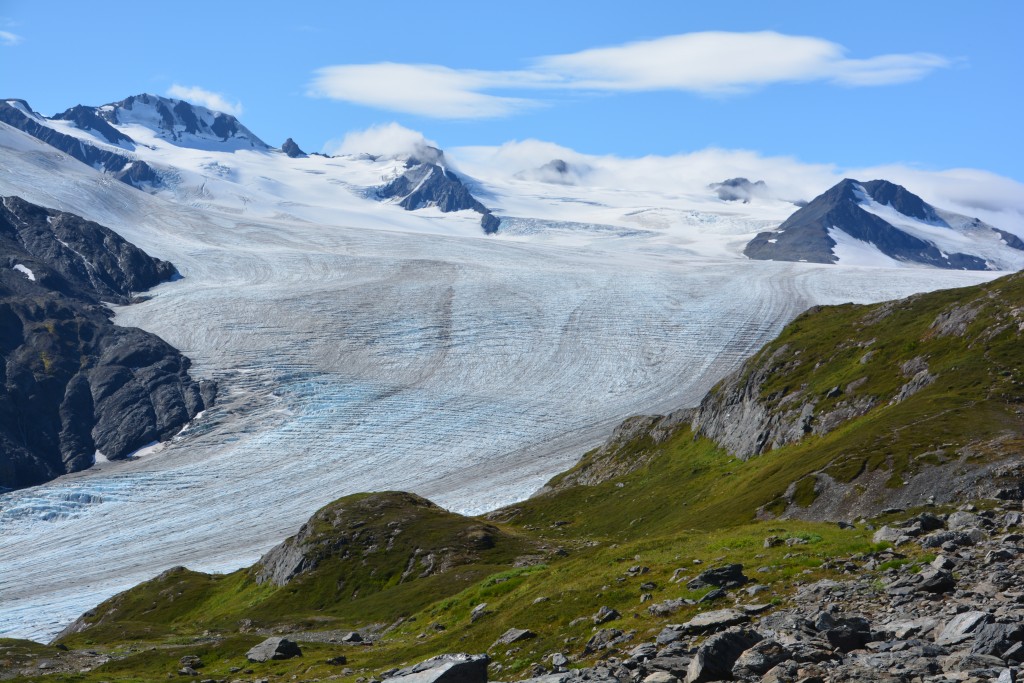
A stunning scene emerged as I neared the top – behind the glacier were mountain tops sticking out from the deep icefield
The journey up the trail provided ever increasing views of the long winding Exit Glacier but also emerging views of the Harding Icefield. I wasn’t quite prepared for what it all might look like but as I reached the top and the immensity of icefield was laid out before me and I was just stunned. For 180 degrees in front of me the scene was a massive coating of ice, sometimes 1,000 feet thick, for as far as I could see. Little mountain tops sometimes peaked out from the ice giving it the appearance of an ocean with islands. It took my breath away.
I stayed at the top for almost an hour, partly to have lunch and recover from my near-death experience to get here and partly because the view was too good to leave. I knew I would probably never see this amazing site again and wished Julie could have somehow been helicoptered in to see it also but eventually I lifted my sore and tired bones and dragged myself back down. It was a day for the books, that’s for sure.
I took a short video from the top of the icefield which you can see here – https://www.youtube.com/watch?v=Kr7E6gN7AxI
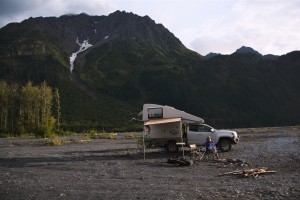 After camping our third night on the gravel wash of the glorious Resurrection River with familiar high mountains and snow patches all around, we went into Seward and did a special little walking track to study all the different kinds of berries that can be found in the area. We walked amongst the beautiful coastal rainforest and identified blueberries, salmonberries, elderberries and devil’s club berries before hearing a rustle in the thick bushes and then seeing a bear emerging on the slope above us. Luckily Julie was singing her anti-bear songs and I was doing my Hey Bear, Hey Bear – the poor guy scampered away so fast he probably lost all his berries.
After camping our third night on the gravel wash of the glorious Resurrection River with familiar high mountains and snow patches all around, we went into Seward and did a special little walking track to study all the different kinds of berries that can be found in the area. We walked amongst the beautiful coastal rainforest and identified blueberries, salmonberries, elderberries and devil’s club berries before hearing a rustle in the thick bushes and then seeing a bear emerging on the slope above us. Luckily Julie was singing her anti-bear songs and I was doing my Hey Bear, Hey Bear – the poor guy scampered away so fast he probably lost all his berries.
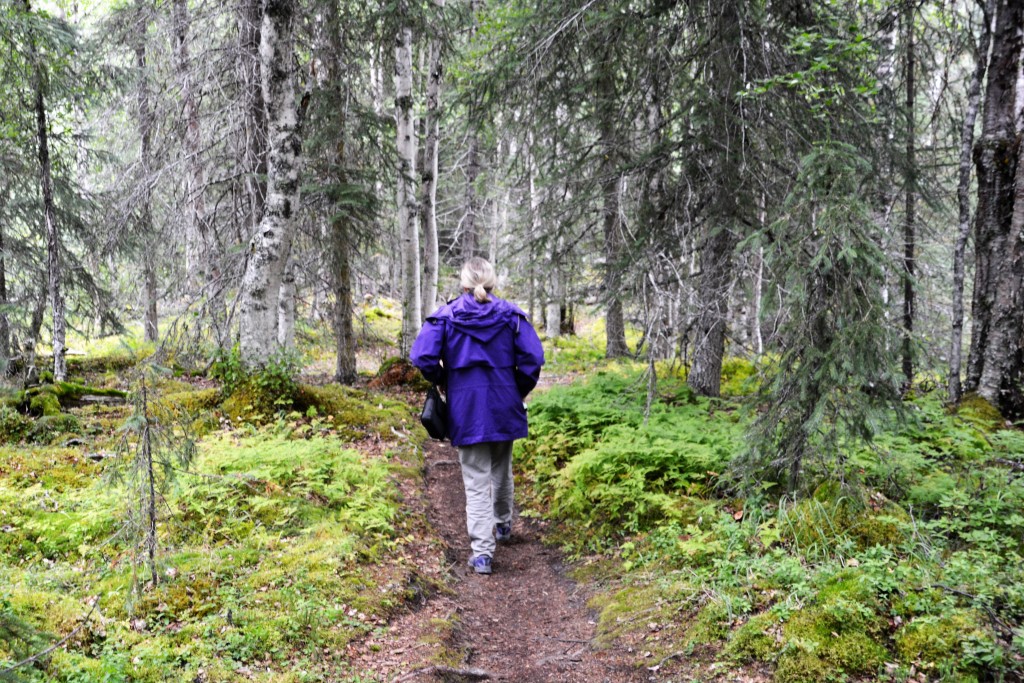
Julie leading us through the forest singing her anti-bear songs – it worked as we surprised a black bear and he quickly ran away
We finally left the Seward area and headed up to the Kenai River where we did a three hour white water rafting trip down this marquee river. I say white water because a couple of times during the trip the rapids did get up to Class II but generally it was a smooth gentle float down the Kenai with its high mountains bordering both sides. We saw uncountable salmon in the clear water (and many fishermen trying their luck along the way), many pairs of bald eagles as they nested high above the river’s banks and a single one year old brown bear, scavenging for dead salmon on the gravel river banks, not a care in the world.
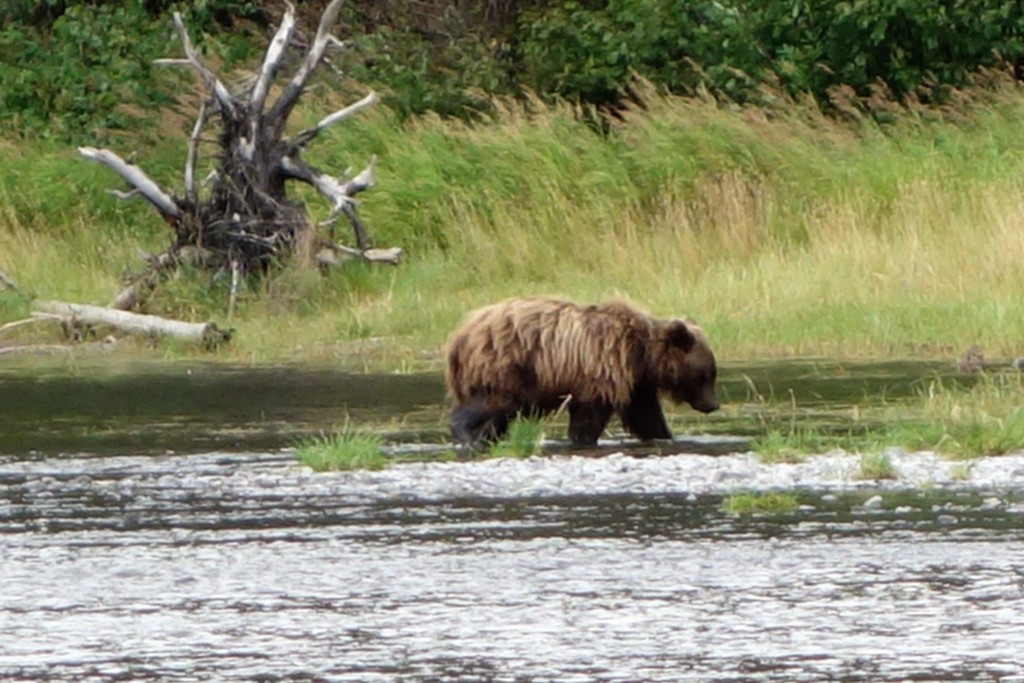
This yearling brown bear was scavenging for dead fish that had already spawned, not bothered by us at all
That night we camped on the bluff overlooking Turnagain Arm in the picturesque little town of Hope. The tide was coming in, the rain held off and the steep mountain walls provided a beautiful setting to end another fun day. The next day we explored this sleepy little historic town, population 170, and then followed the long dirt track up the picturesque cirque valley behind the town.
Our last stop on the Kenai Peninsula was unique but brief. The little town of Whittier, population 200, is nestled amongst the giant mountain walls on Prince William Sound. The site has played a role as a US military base during WWII but has the unique feature of only being accessible by land through a 2.5 mile (4 km) rail tunnel that was converted to also handle a single lane of cars in 2000.
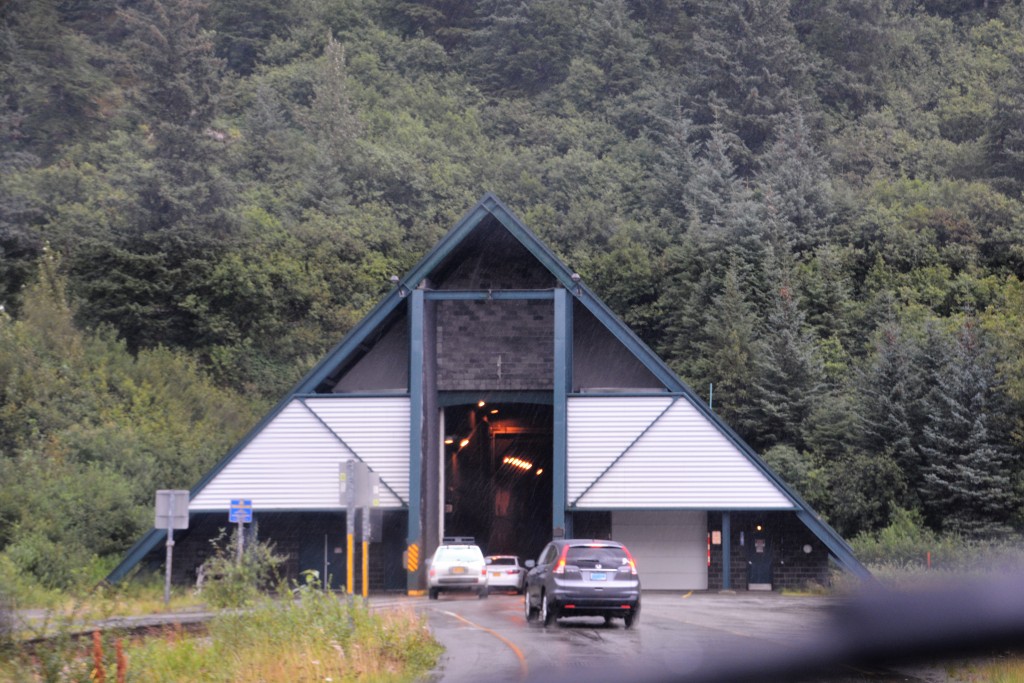
Our time to go – every hour the flow of travel through this one lane tunnel changes, except when there’s a train which always gets the right of way
Every hour the road changes direction so that traffic can flow in each direction, except when a train is coming through and they get the right of way. But other than a port for day cruisers on the Sound Whittier has very little to offer and most residents all live in the same huge building which provides all the necessities of life under one dry and warm roof. Beautiful spot, but sheesh!
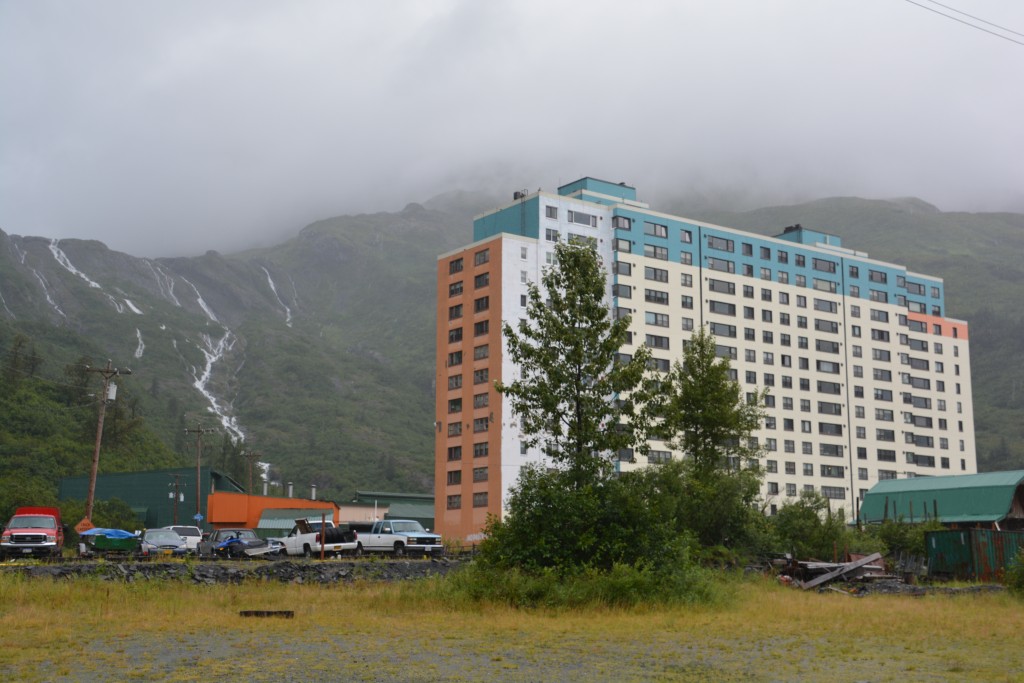
The beautifully positioned but remote town of Whittier where most of its 200 residents live in this single building – note all the small waterfalls from the torrential rain
We enjoyed our time on the Kenai Peninsula, a real highlight of our travels, but now it was on the Anchorage, the big smoke, and more adventures beyond.

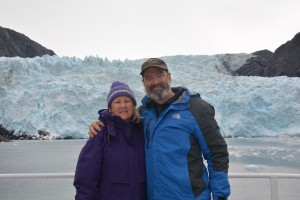
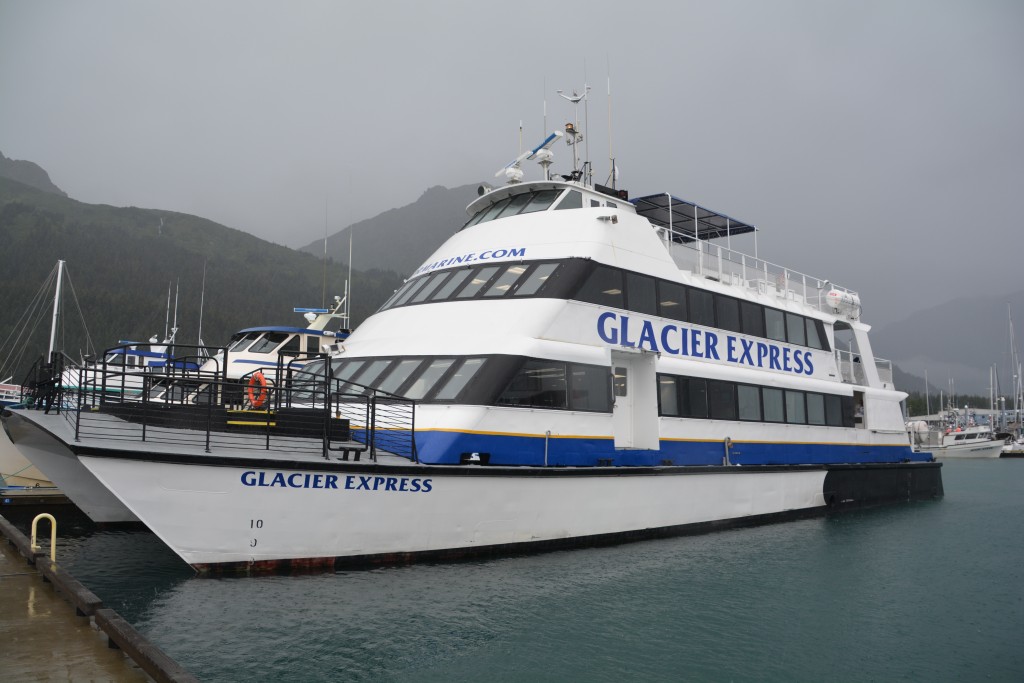
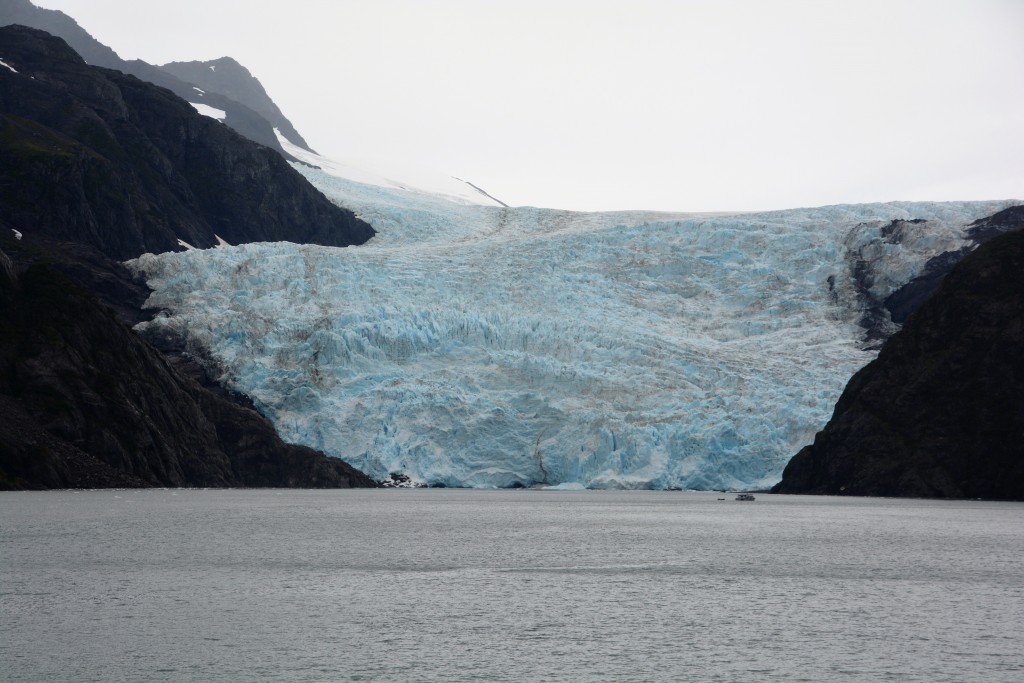
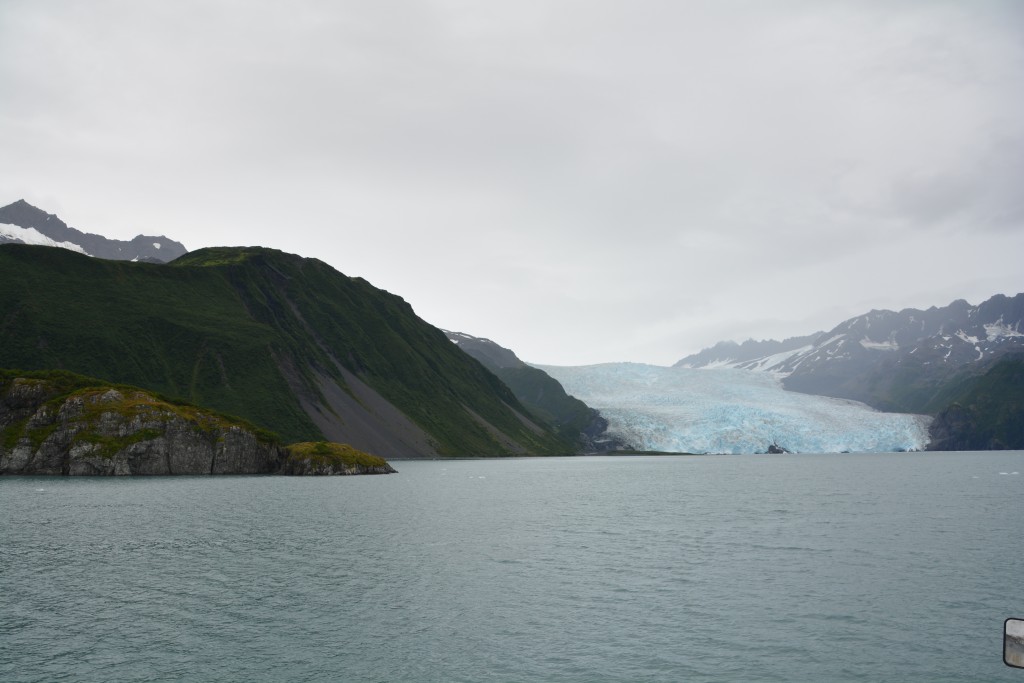
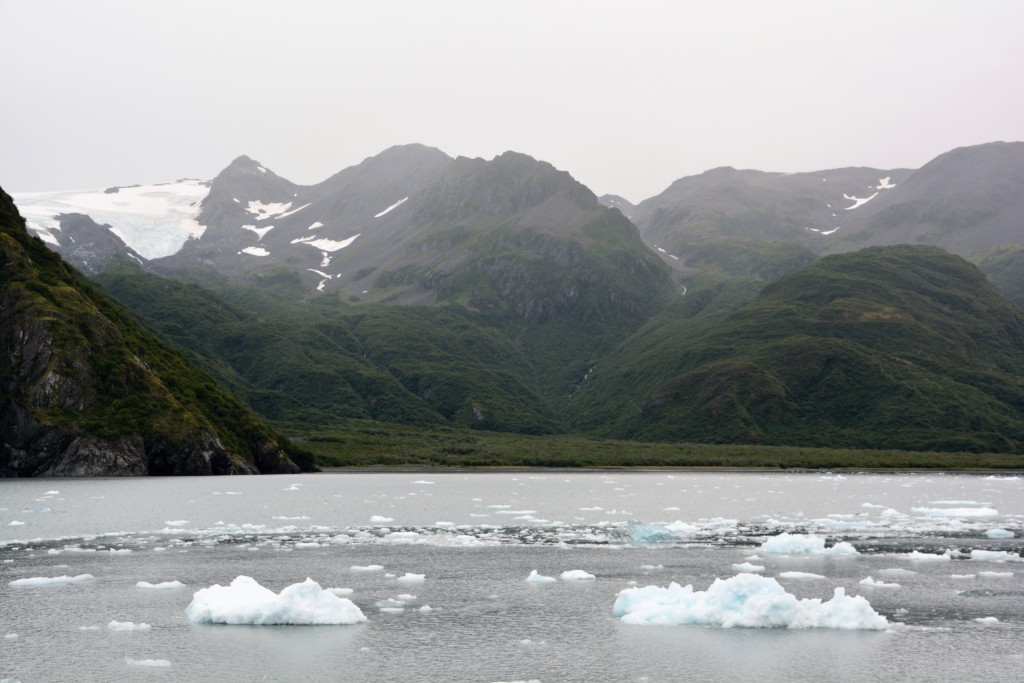
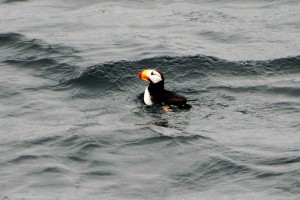
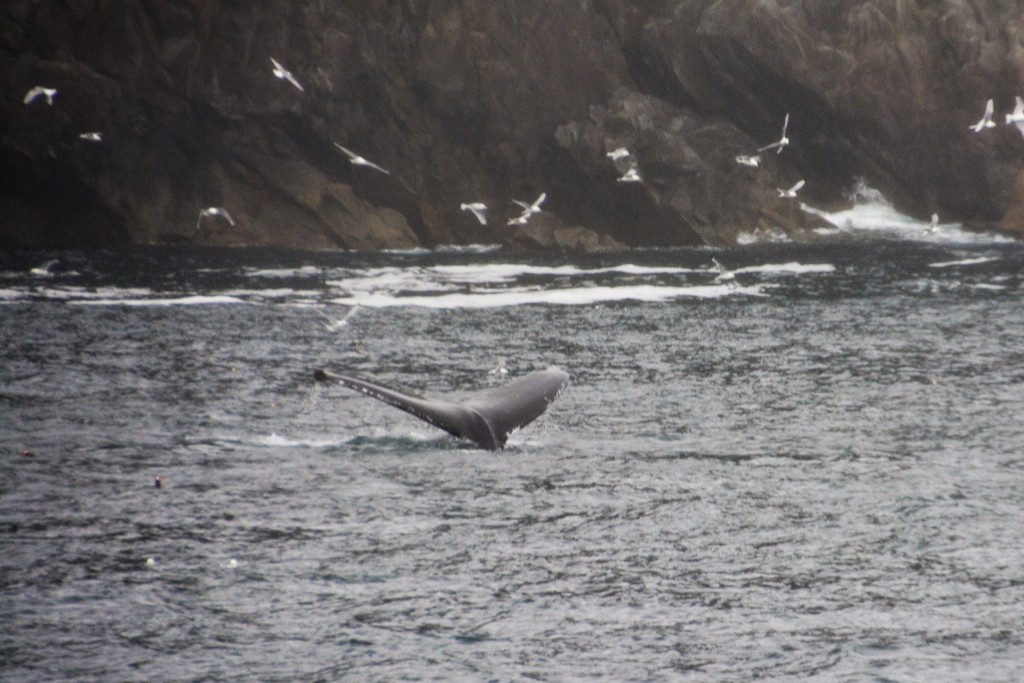
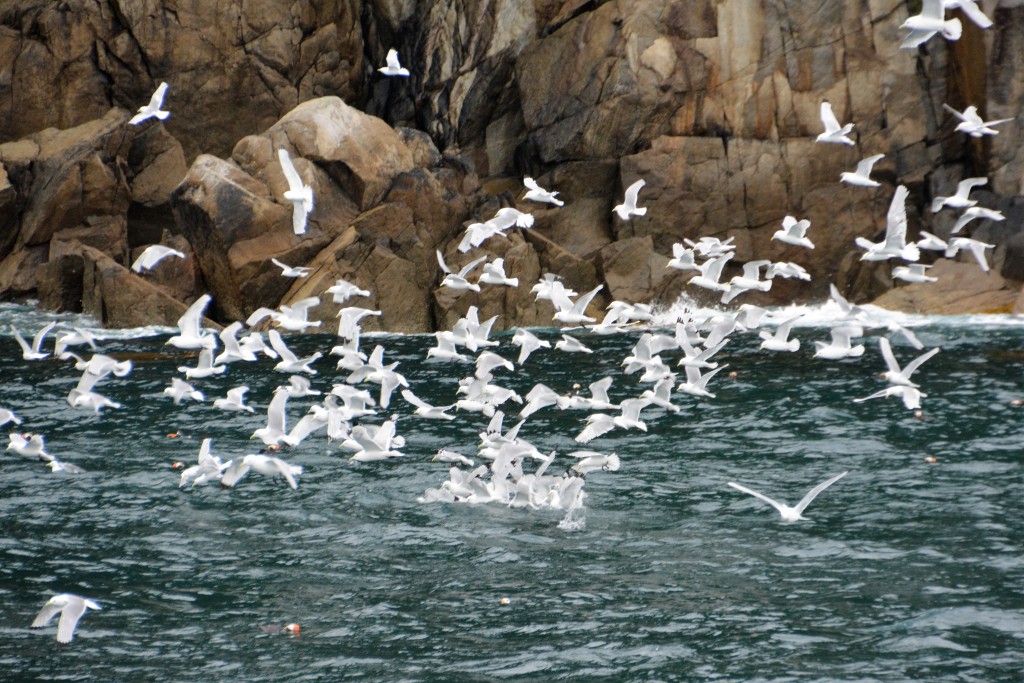
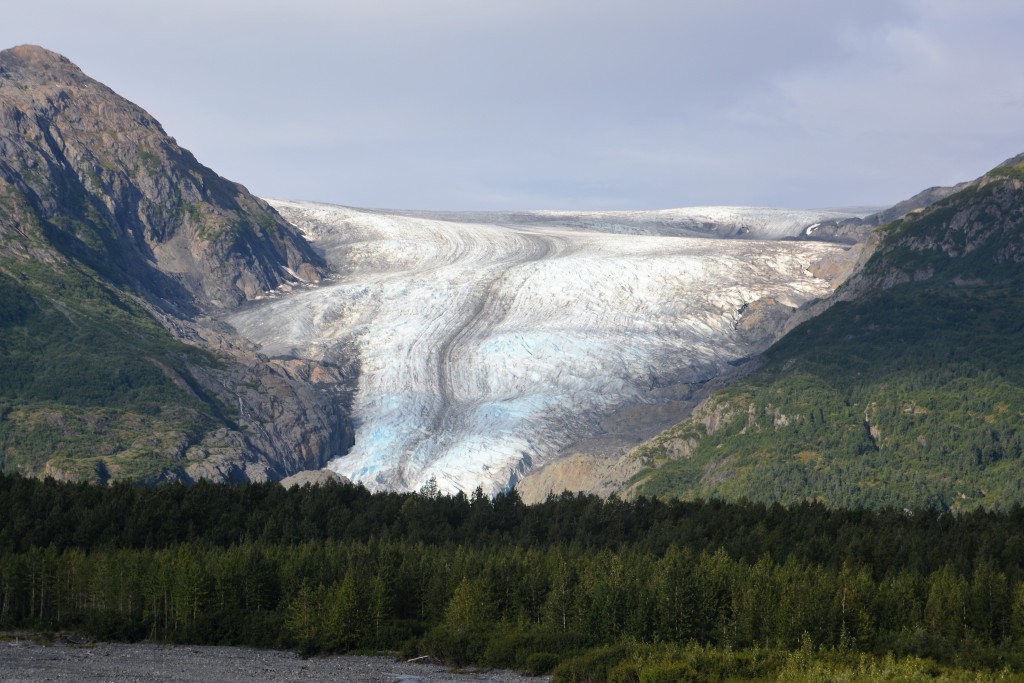
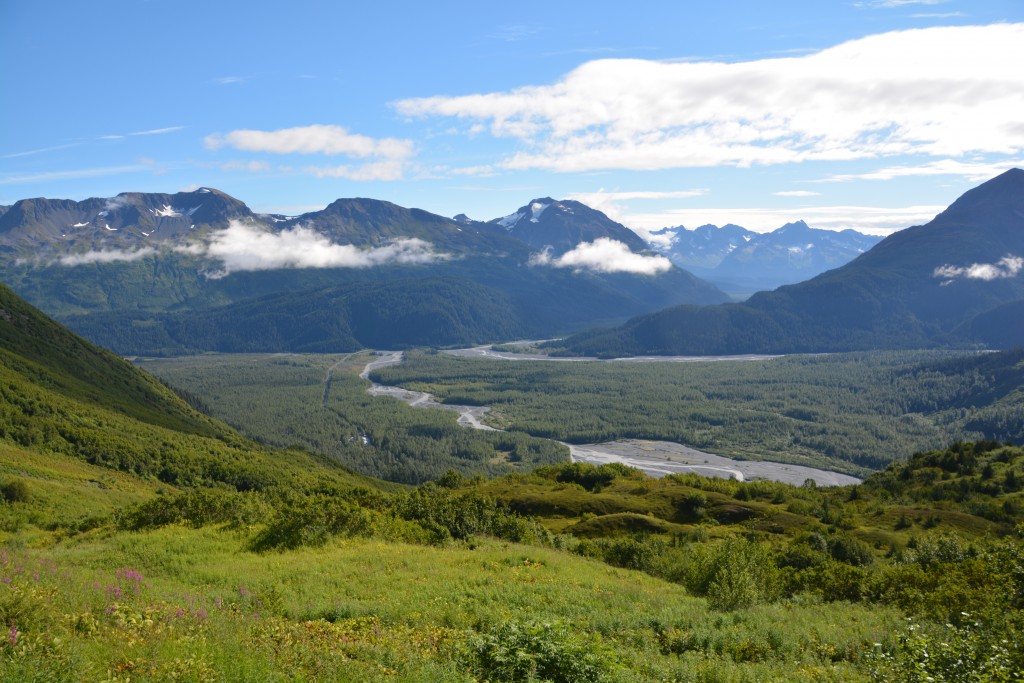
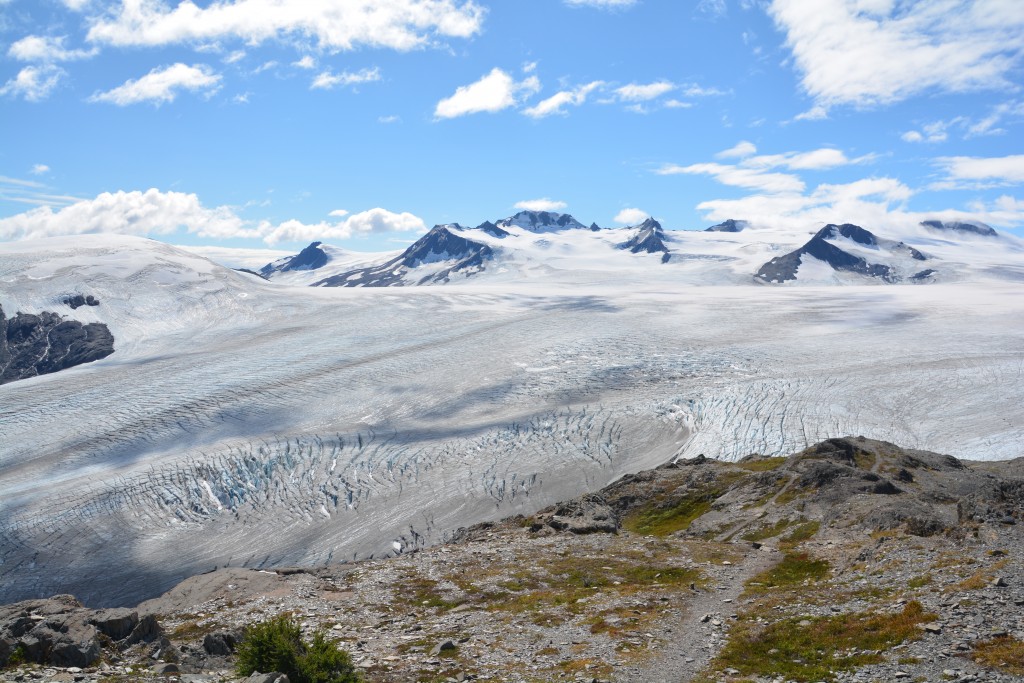
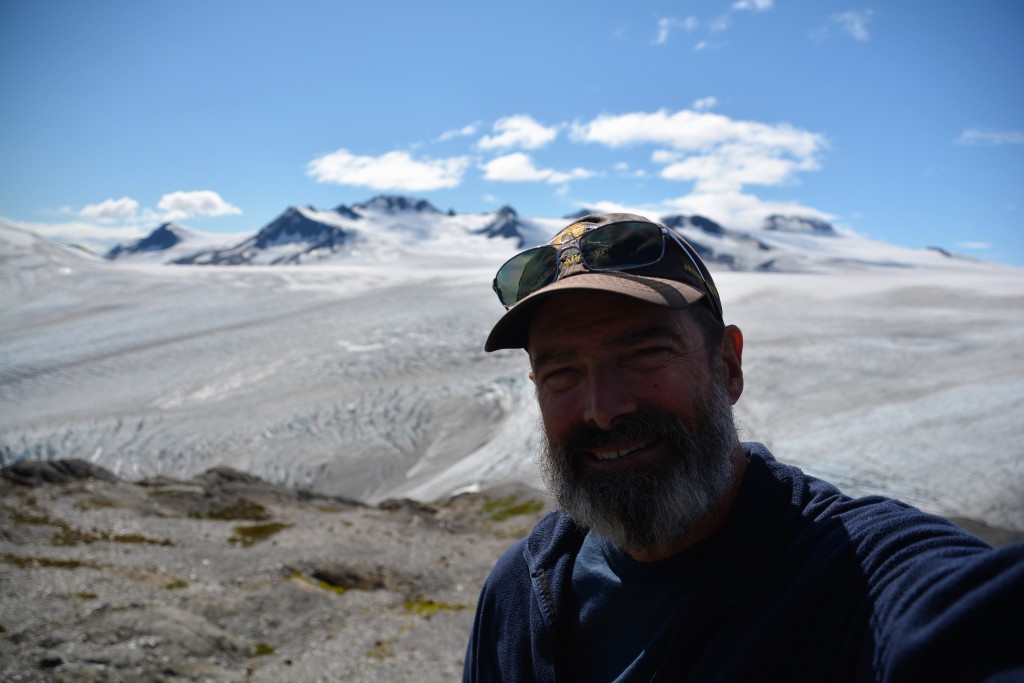
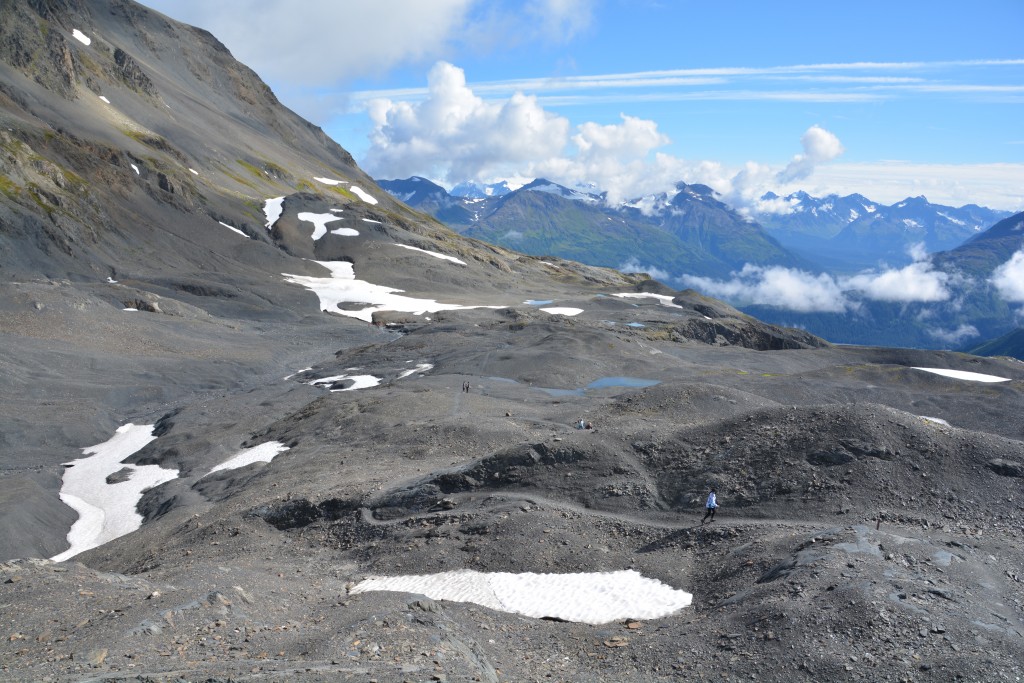
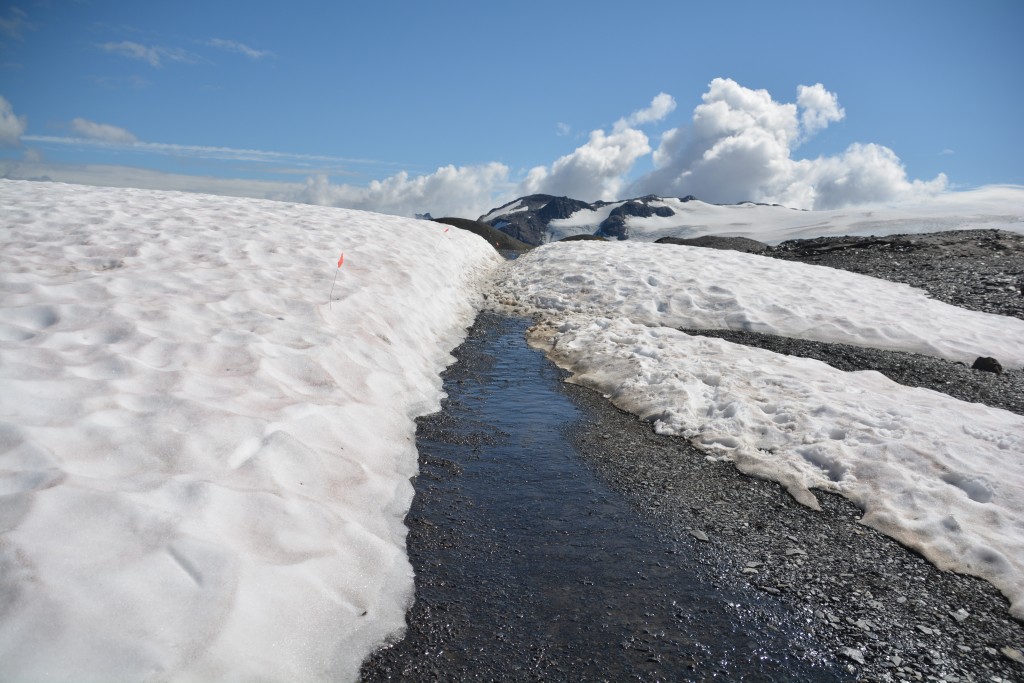
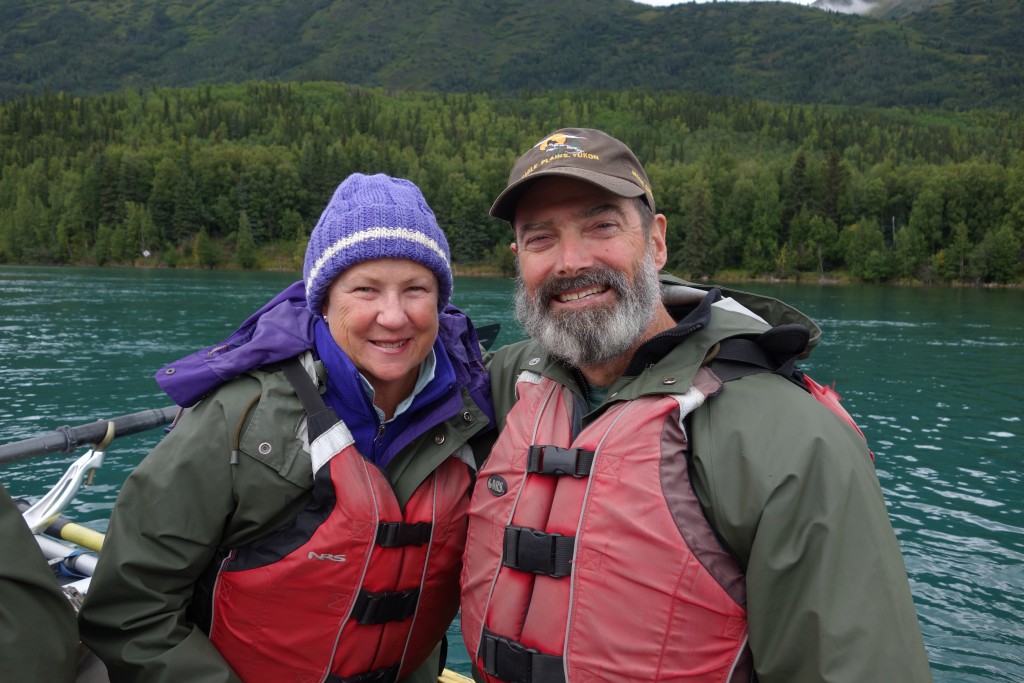
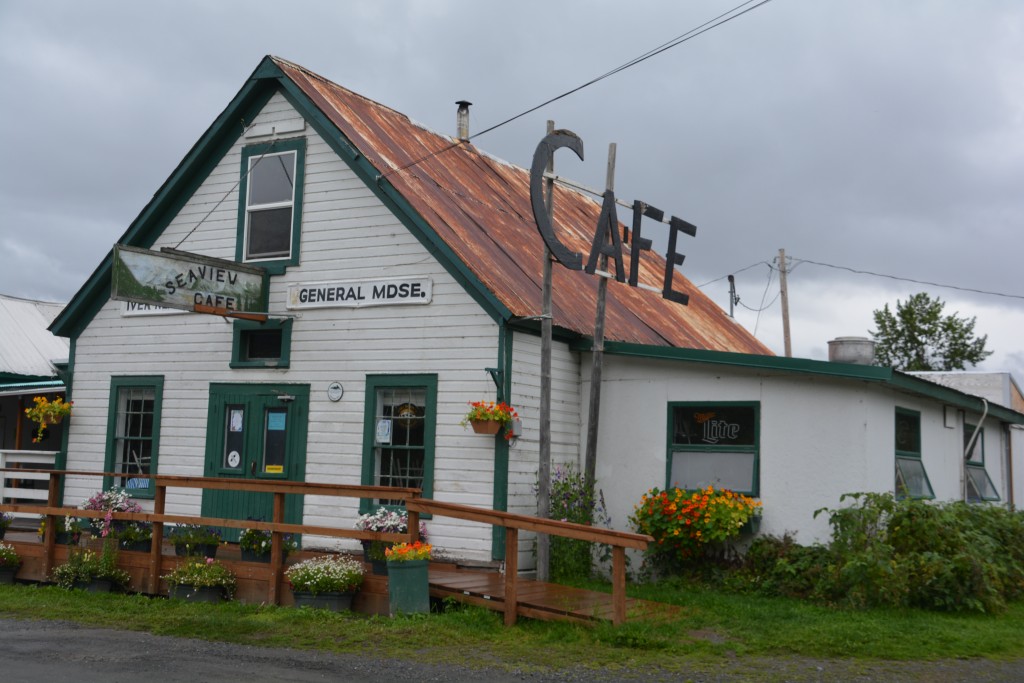
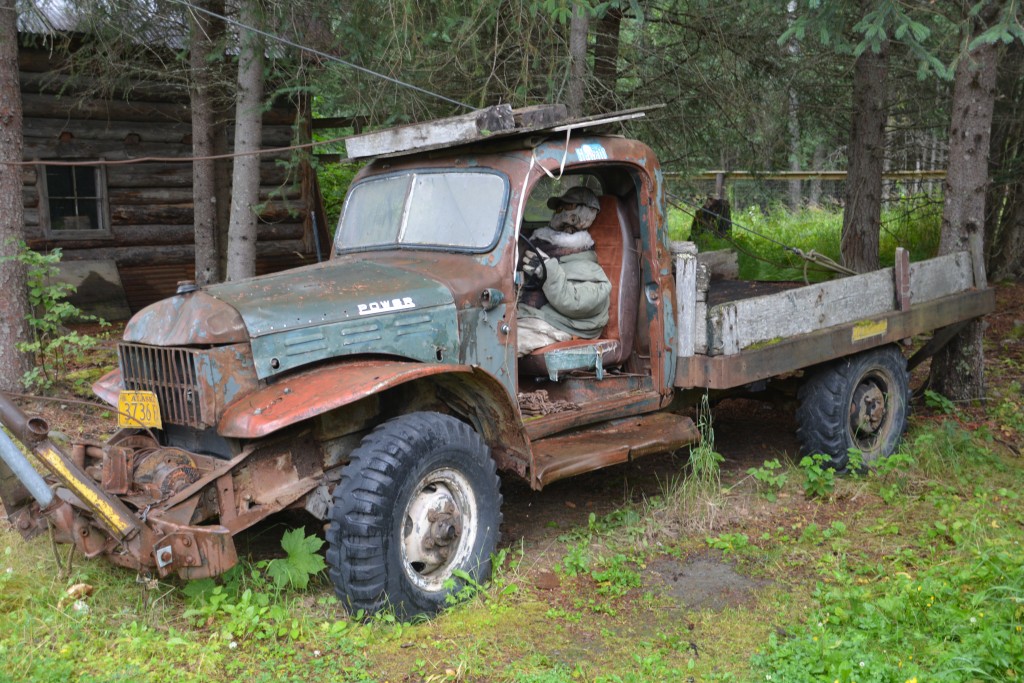
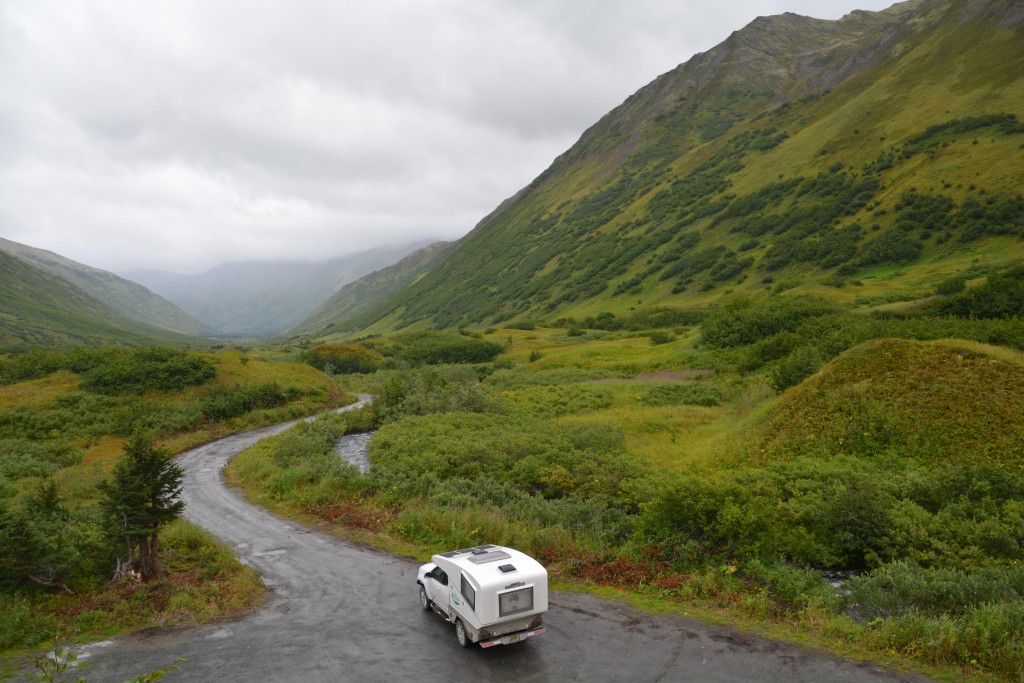
Comments
By land and by sea — No Comments
HTML tags allowed in your comment: <a href="" title=""> <abbr title=""> <acronym title=""> <b> <blockquote cite=""> <cite> <code> <del datetime=""> <em> <i> <q cite=""> <s> <strike> <strong>